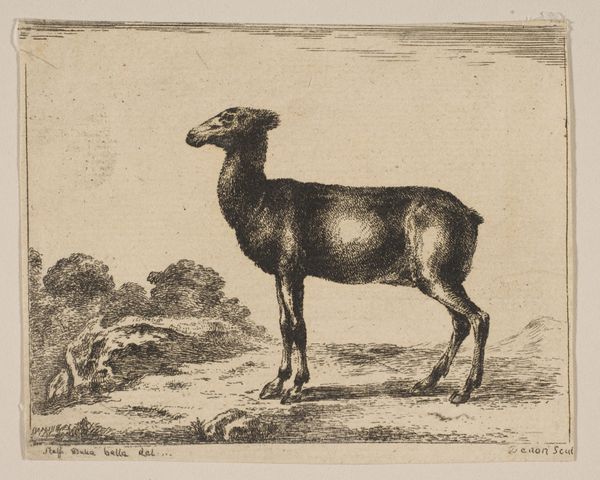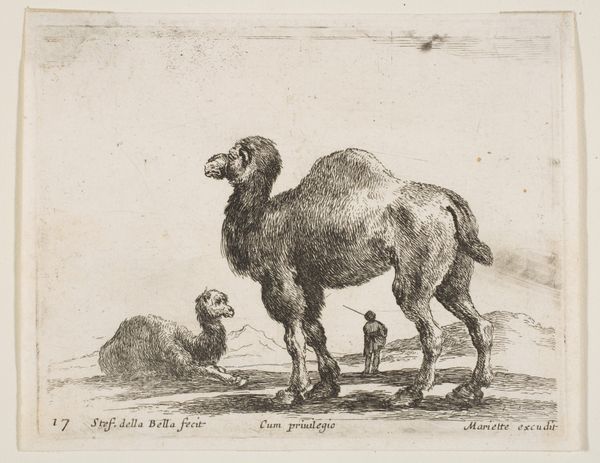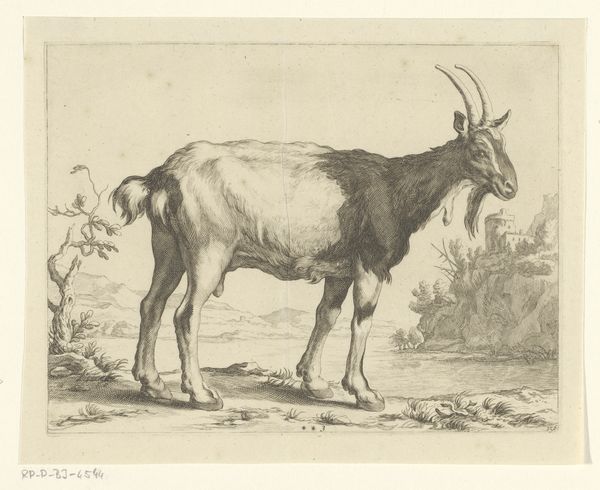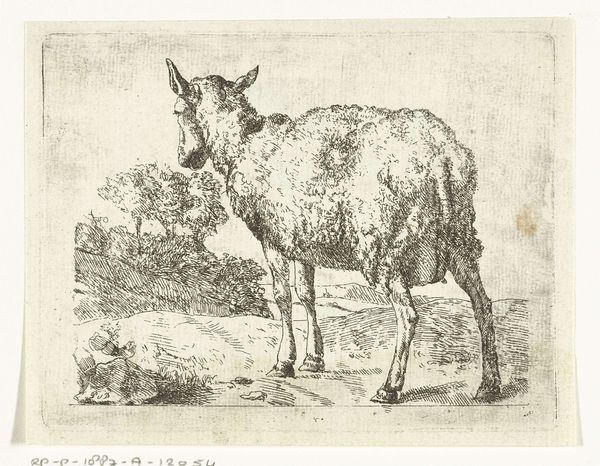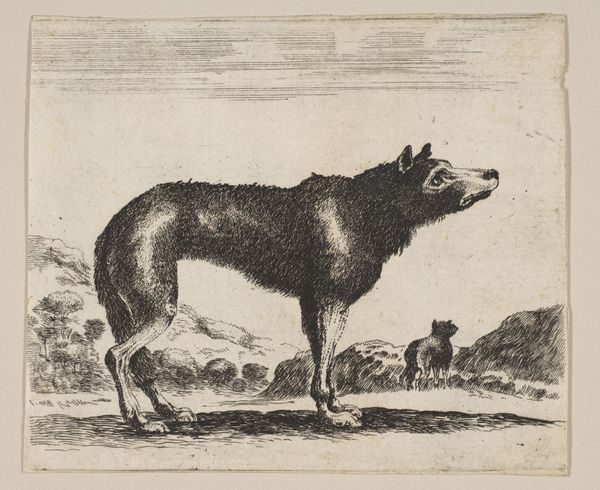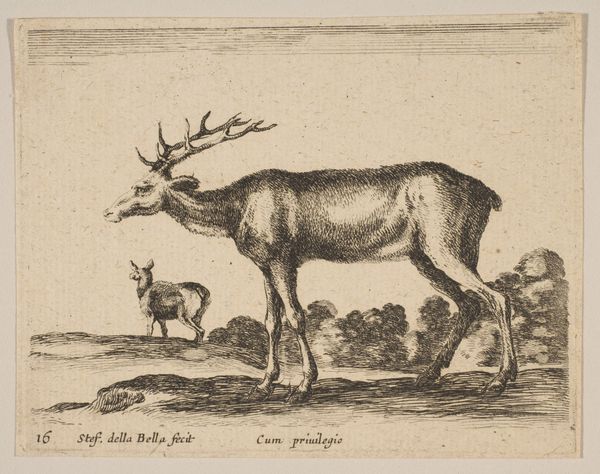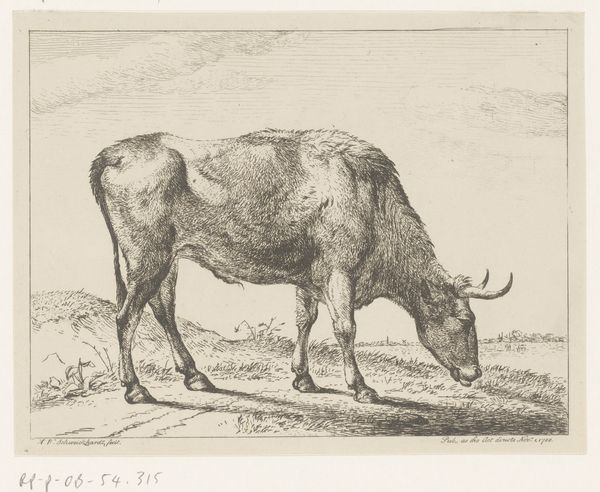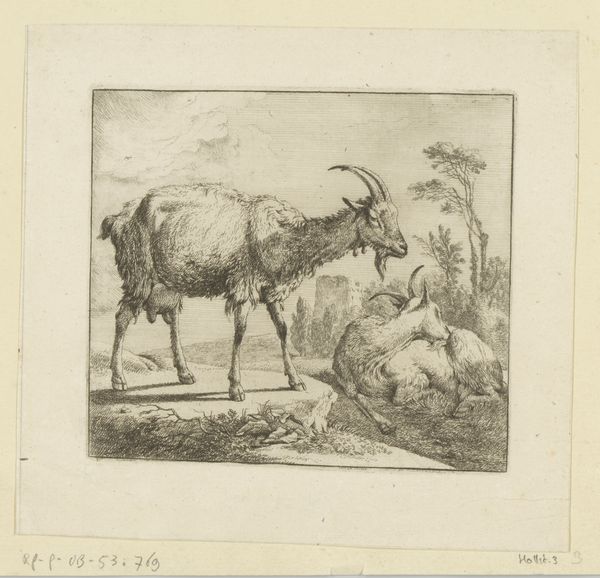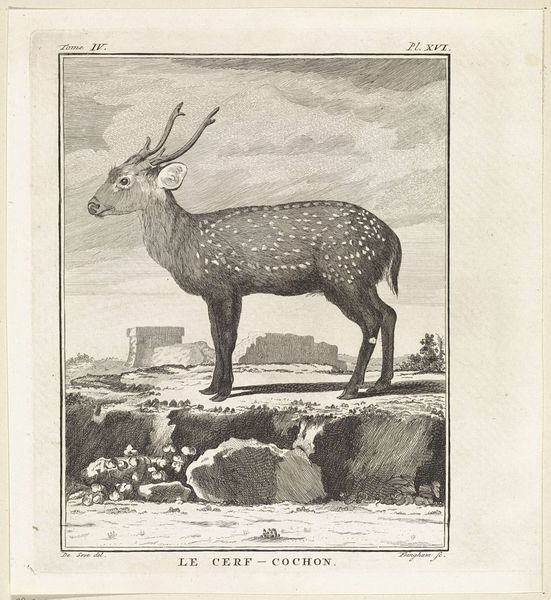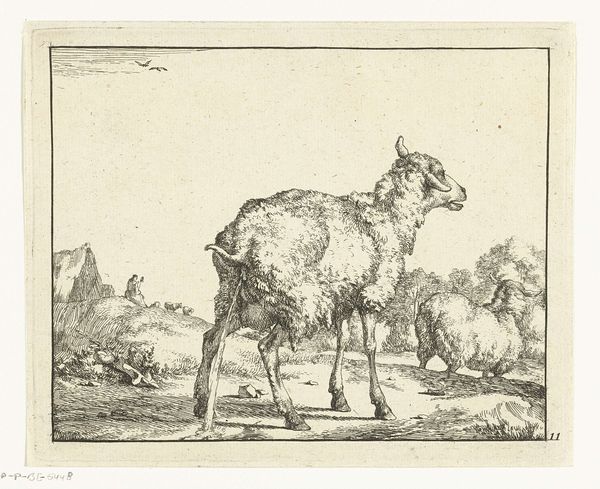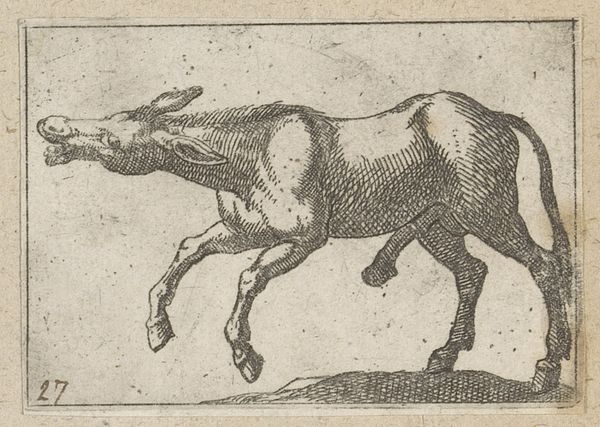
Plate 15: Doe, from "Various animals" (Diversi animali) 1636 - 1646
0:00
0:00
drawing, print, etching
#
drawing
#
baroque
#
animal
# print
#
etching
#
landscape
#
figuration
Dimensions: Sheet (trimmed to plate): 3 3/8 × 4 5/16 in. (8.6 × 11 cm)
Copyright: Public Domain
Editor: So, here we have "Plate 15: Doe, from "Various animals," an etching by Stefano della Bella from the mid-17th century. It’s interesting how this simple depiction of a doe manages to feel so… regal? How do you interpret this work, particularly its symbolism? Curator: The doe, across cultures, carries potent associations with gentleness, nurturing, and a connection to the natural world. In art, particularly during the Baroque era, animals often served as allegorical figures. Does the doe's stance remind you of anything? Editor: It almost seems poised, like a portrait of nobility! Curator: Precisely! Della Bella infuses the animal with a sense of dignity, echoing the portraits of aristocrats prevalent at the time. Notice how the landscape behind her is quite minimal, yet effective. Consider that visual vocabulary. How might that landscape serve to amplify her status? Editor: Perhaps by highlighting her harmony with nature, contrasting with the artificiality of court life? It’s like she embodies an idealized virtue. Curator: Exactly! She's a vessel of cultural values regarding femininity, nature, and grace. These images helped to shape a cultural understanding, creating ideals that became ingrained in our collective consciousness. Think of her not just as a single creature, but a recurring image resonating through generations. What does that suggest to you? Editor: It shows the power of art to define and reinforce our perceptions of the world, subtly influencing our beliefs and expectations. I never would have thought that such a simple animal sketch could have such deep meaning! Curator: The visual world is filled with symbolic carriers, quietly shaping our understanding. Recognizing these repeating symbols allows a dialogue between past and present.
Comments
No comments
Be the first to comment and join the conversation on the ultimate creative platform.
